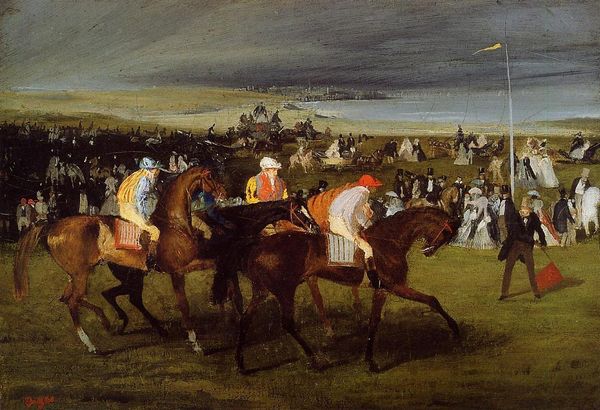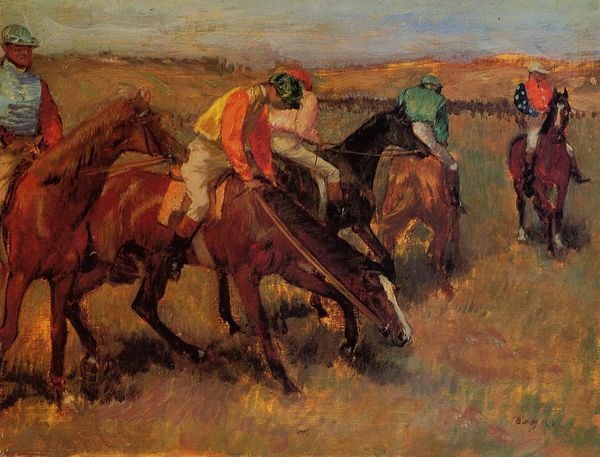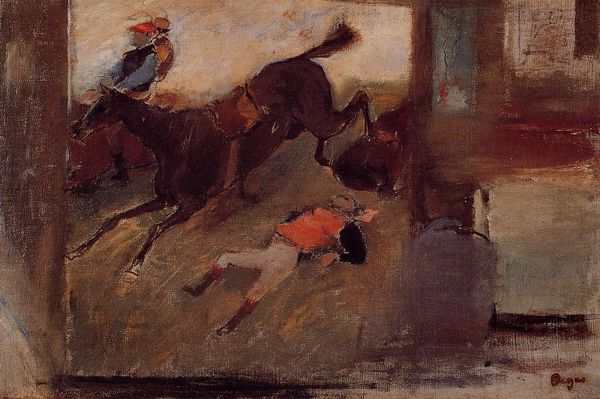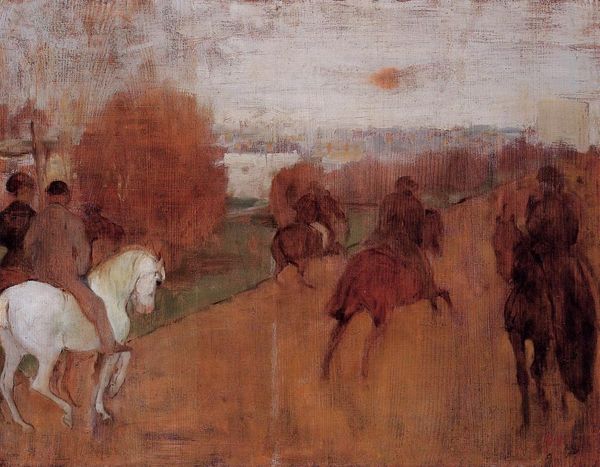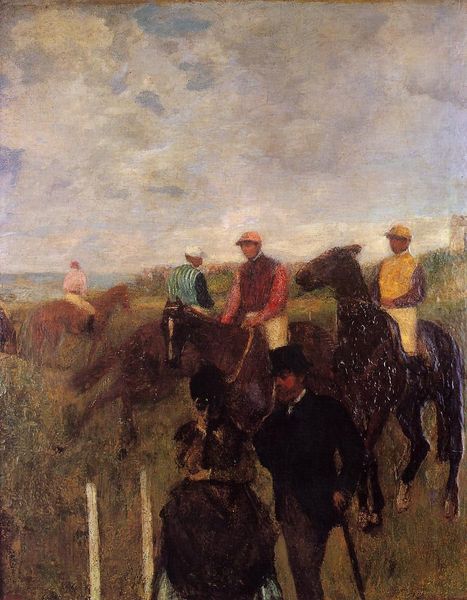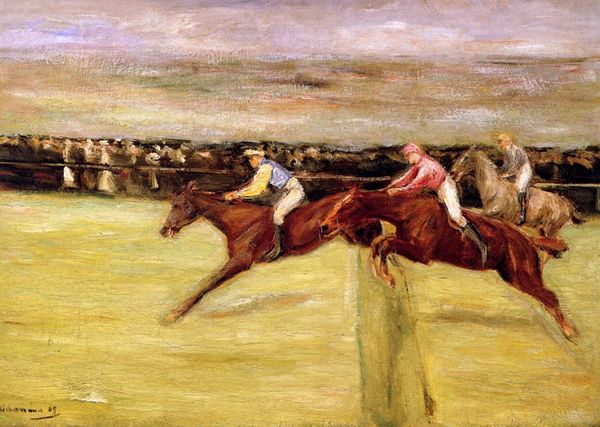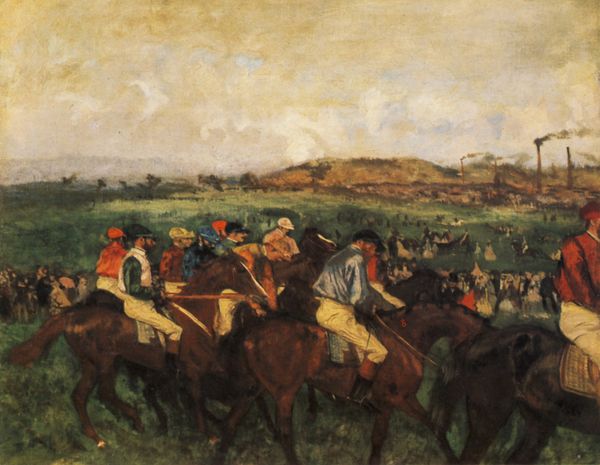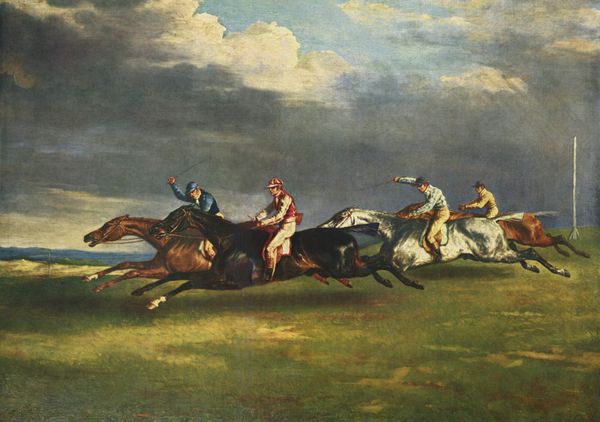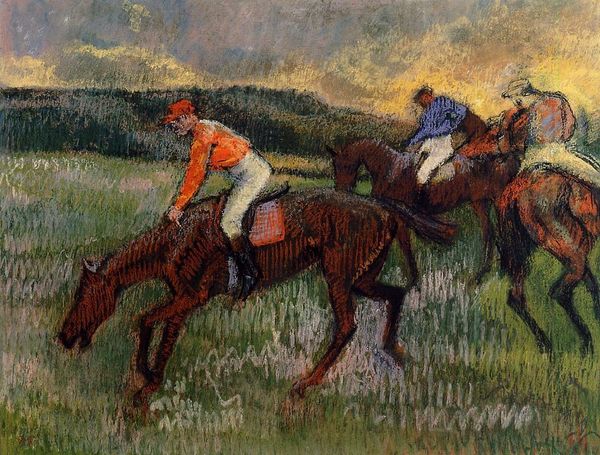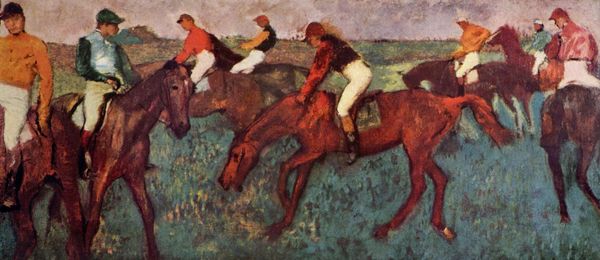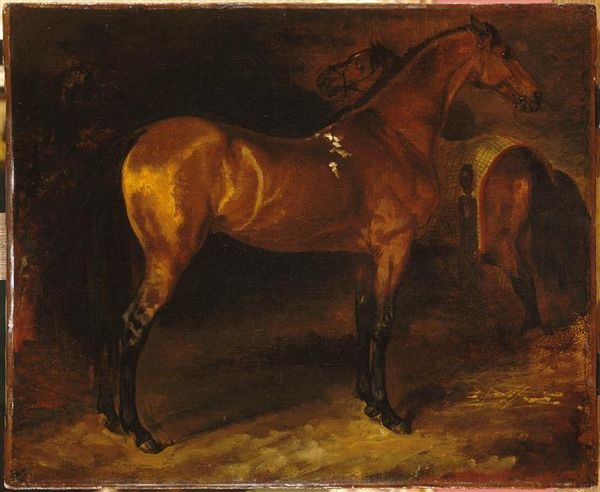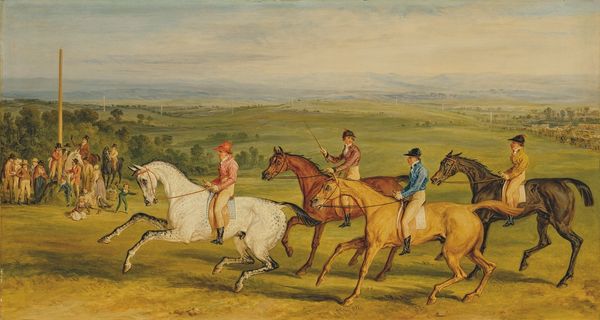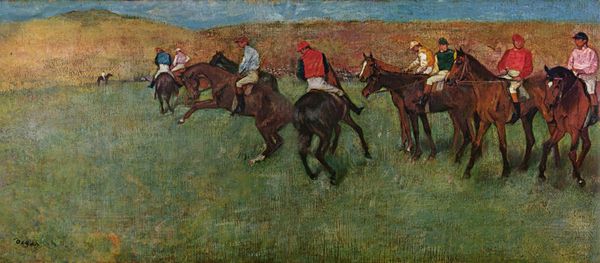
oil-paint
#
portrait
#
impressionism
#
oil-paint
#
landscape
#
figuration
#
oil painting
#
horse
#
genre-painting
Copyright: Public domain
Curator: Edgar Degas created this oil painting, "Jockeys at Epsom," in 1862. It provides a glimpse into a moment in time at the renowned Epsom Downs Racecourse. The scene feels... unsettled, doesn't it? Editor: Yes, unsettled. The colors are muted, almost brooding, despite the subject being a horse race. The figures in the background are barely discernible, adding to the atmosphere of tension. The brushwork is remarkably loose for its time. It lacks the sort of formal perfection one might expect. Curator: Exactly. It anticipates so many Impressionist and Post-Impressionist techniques! Beyond the pure aesthetics, I find it quite insightful as to how social structures were shifting during that period. Horse racing at Epsom, while seemingly a leisurely pastime, really represented a consolidation of aristocratic power. Land ownership, leisure, spectacle: it all connects. Editor: And the horse itself, such a powerful and prevalent symbol! It connects us back to antiquity. We find equestrian statues of emperors, allegories involving steeds pulling the chariots of gods... the horse is intelligence, power, virility! Curator: Right, and Degas is subverting the heroic, archetypal symbol. There is nothing grandiose about this picture. It’s almost as if Degas deliberately resisted painting the dynamic action of a horse race, favoring instead to showcase its more quotidian aspects, maybe commenting on labor practices or class. Editor: I also find myself drawn to the composition, the cropped figures. It emphasizes a sort of anticipation—a liminal moment right before explosive action, maybe? It's psychologically very compelling. The obscured details invite my interpretation, too, which perhaps is a function of memory; so many fragmented elements. Curator: That’s right. I see it in conversation with issues of representation as a whole. What stories do we tell? Whose voices get amplified or silenced? Degas presents an intimate glimpse into a pivotal intersection in England's past. Editor: And it leaves us with lingering questions about symbols, the weight of tradition, and the ever-evolving relationship between humans and animals. Fascinating how one painting can spark such different interpretations.
Comments
No comments
Be the first to comment and join the conversation on the ultimate creative platform.
